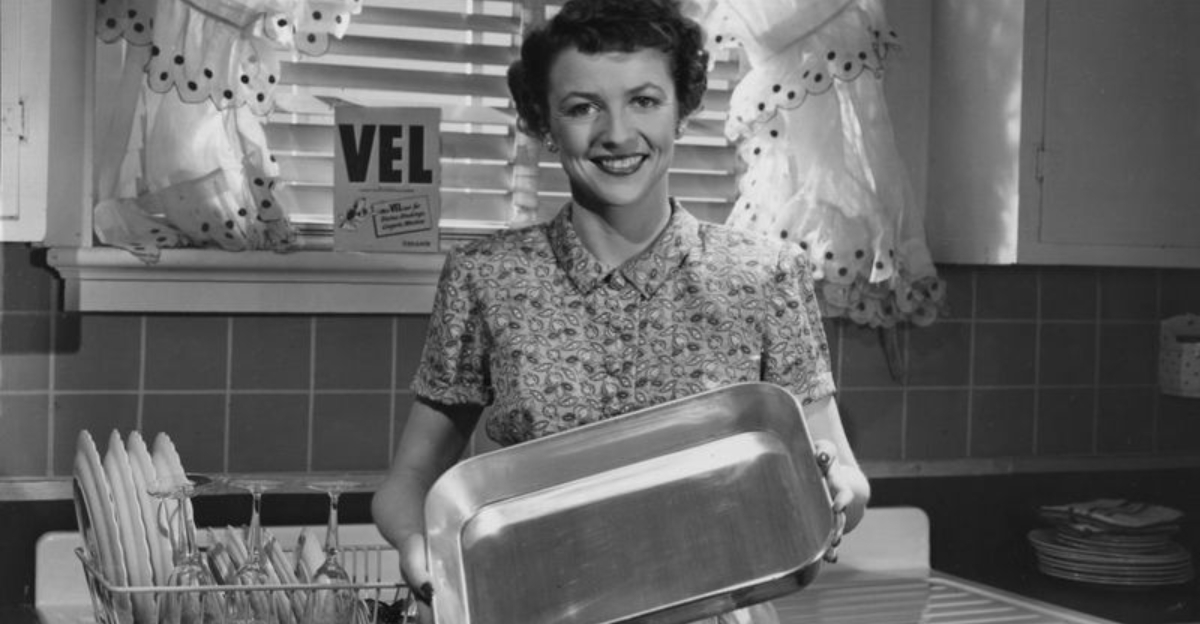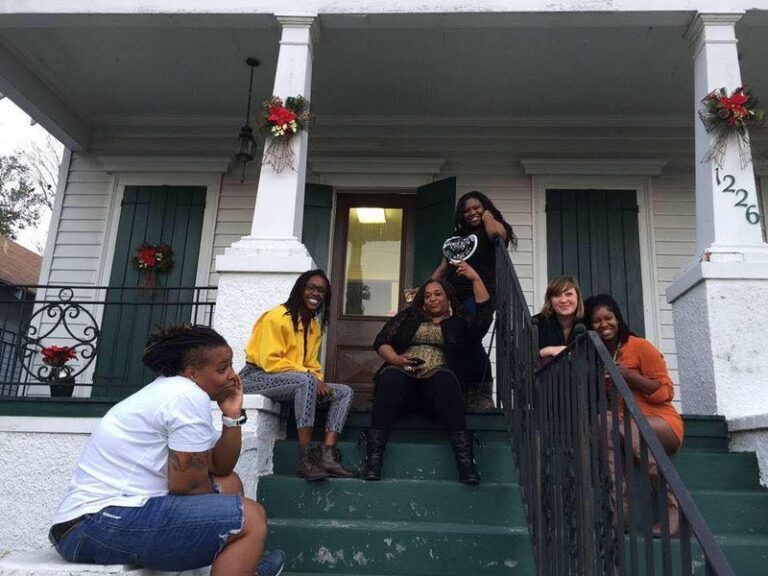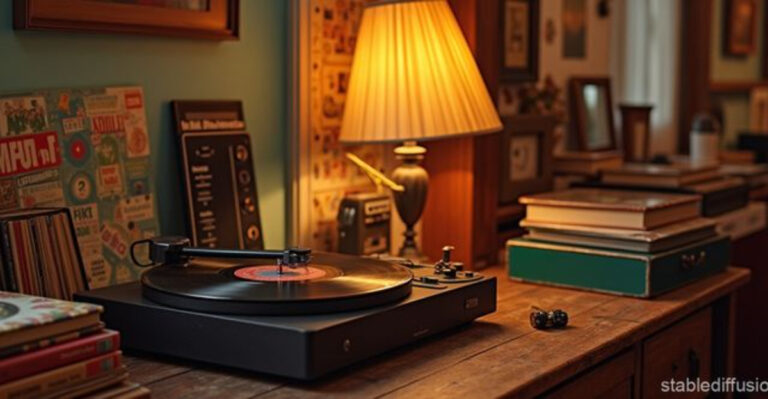18 Restrictive ’50s Rules That Stopped Women from Having Fun And Would Be Outrageous Today
The 1950s were a time of strict societal norms, especially for women. These rules dictated their behavior, clothing, and even finances, confining them to roles deemed acceptable by society.
This blog post explores 18 of these restrictions that limited women’s freedoms and choices, showcasing how bizarre they feel in today’s context.
1. Women couldn’t wear pants in many public places
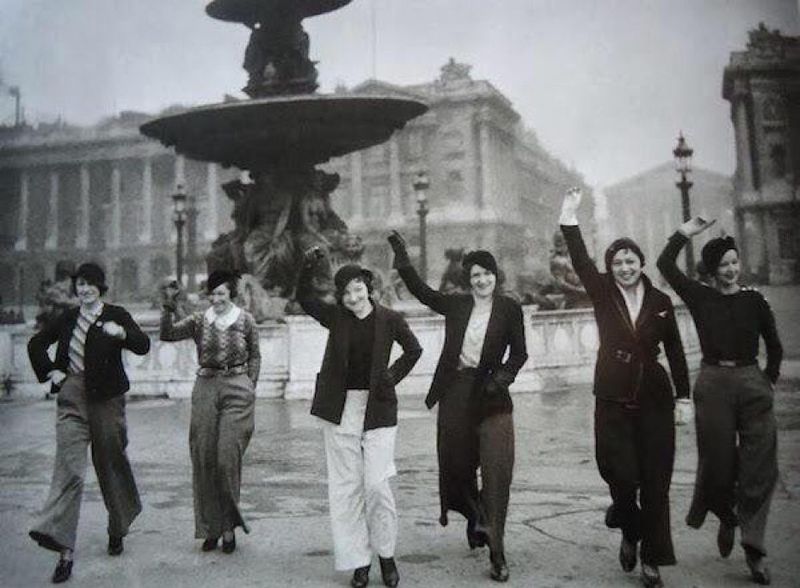
In the 1950s, wearing pants was a big no-no for women in many public places. The fashion police, both literal and figurative, patrolled the streets ensuring skirts and dresses reigned supreme. It wasn’t just about fashion; it was a symbol of femininity that society clung to with rigid fingers.
Public spaces like schools and restaurants often upheld strict dress codes that forbade women from wearing anything resembling men’s attire.
This restriction was enforced with a seriousness that seems absurd today. Imagine being told you couldn’t wear what’s comfortable because it’s not “ladylike.” The underlying message was clear: blend in, don’t stand out. Thankfully, women today can wear whatever they please without judgment.
2. Wives needed their husband’s signature to open a bank account

In an era where financial independence was a distant dream for many women, the requirement for a husband’s signature to open a bank account was a glaring inequality. This rule reinforced the idea that women were financially dependent on men, lacking the autonomy to manage their own money. This dependency restricted their ability to save, invest, or even spend independently.
Such financial restraints curtailed personal freedom and reinforced gender roles that kept women “in their place.” Women faced this barrier in an age where their roles were largely confined to domestic spheres. Today, this old rule seems not just outdated, but utterly unimaginable, as women have successfully claimed their rightful place in the world of finance.
3. Talking openly about money was considered “unladylike”

The unwritten rule of the 1950s was that discussing money was taboo for women. It was deemed “unladylike” to talk openly about finances, whether it was budgeting, earning, or investing. This silence was rooted in the belief that financial matters were strictly men’s business.
Women, therefore, found themselves excluded from discussions that directly impacted their lives and futures. Money was meant to be a discreet topic, whispered about only in trusted circles. The expectation was clear: focus on home, not on numbers.
This rule kept women shackled in financial ignorance, a stark contrast to today where financial literacy is encouraged for all. The shift towards open financial discussions has empowered women globally.
4. Unmarried women were shamed for living alone

Living alone as an unmarried woman in the 1950s was a social anomaly that sparked gossip and disapproval. Society expected women to live with family until marriage, and any deviation was met with suspicion. Such independence was frowned upon and often seen as a failure to secure a husband.
The stigma attached to unmarried women living alone made their personal choices a topic of public scrutiny. This rule perpetuated the notion that a woman’s worth was tied to marital status. Today, the idea that living independently is a cause for shame seems absurd, as many women choose solo living arrangements to embrace freedom and self-discovery without societal pressure.
5. Women were expected to quit their jobs after marriage
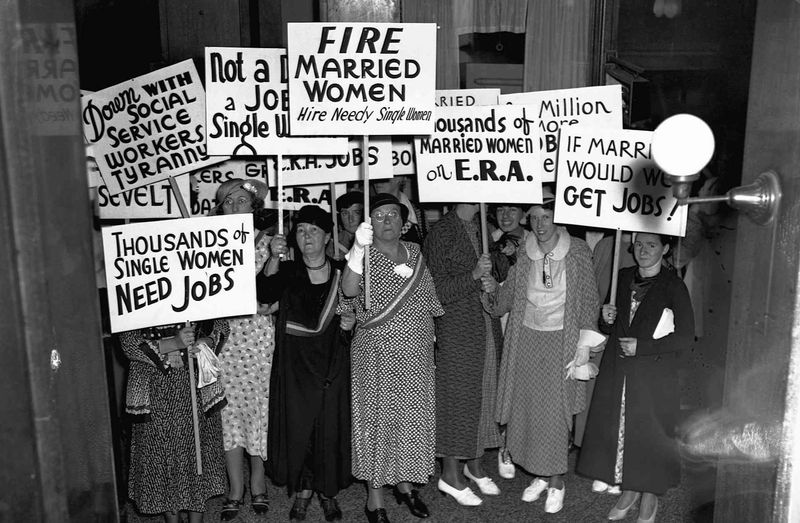
In the 1950s, marriage often marked the end of a woman’s professional life. Women were expected to leave their jobs and settle into domestic roles as wives and mothers. This expectation was not just a cultural norm but also a societal pressure that pushed women out of the workforce.
The belief was that a woman’s place was at home, nurturing her family rather than pursuing a career. This rule forced many women to abandon their ambitions and financial independence, leaving them economically reliant on their husbands. Today, this expectation is not only outdated but unfathomable, as women juggle successful careers and family life, proving that they can, indeed, have it all.
6. Church and community groups monitored women’s fashion
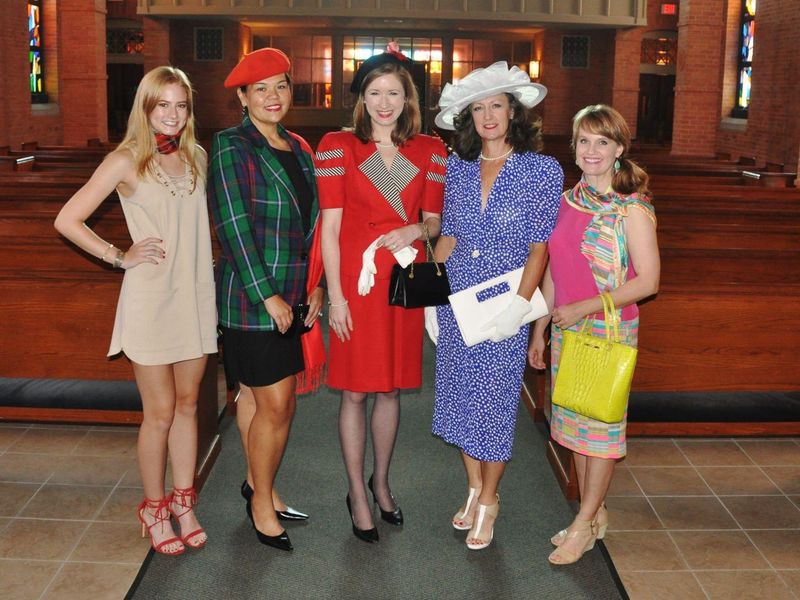
In the 1950s, church and community groups took on the role of fashion police, monitoring women’s clothing choices to ensure they adhered to “proper” standards. Hemlines, necklines, and even fabric types were scrutinized for modesty.
Such oversight was seen as a moral duty, reflecting the prevailing view that women needed guidance to dress appropriately. This surveillance extended beyond fashion to an underlying control over women’s autonomy and expression.
The cultural pressure to conform left little room for individuality. Today, fashion is a form of personal expression and empowerment, a stark contrast to the days when community approval dictated what women could or couldn’t wear.
7. Women couldn’t get a credit card without a male co-signer
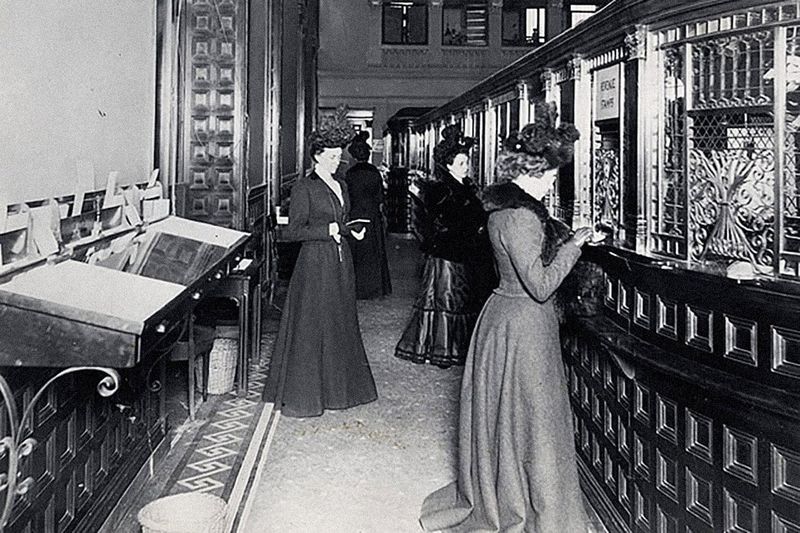
The notion that a woman needed a male co-signer to obtain a credit card reflects the gendered financial barriers of the 1950s. Credit was a man’s world, and women were often denied access to it, reinforcing their economic dependence.
This rule not only limited women’s financial freedom but also perpetuated the idea that they were incapable of managing money. It held women back from opportunities for economic growth and independence.
Today, such a regulation seems absurd as women actively participate in and shape financial markets. The ability for women to access credit independently marks a significant societal change, empowering them to make autonomous financial decisions.
8. Dating multiple people was seen as scandalous

Dating in the 1950s came with an unwritten rule: one partner at a time. Women seen dating multiple people faced harsh judgment, often labeled as promiscuous. Society expected women to adhere to a monogamous dating pattern, with marriage as the ultimate goal.
This expectation limited women’s social lives and romantic explorations, imposing a rigid framework on relationships. The scandal attached to multi-dating signified a cultural obsession with purity and reputation.
Today, exploring different relationships is considered normal and even healthy for personal growth. The shift to a more open-minded approach to dating reflects broader changes in societal attitudes towards relationships and personal freedom.
9. Divorce was treated like a personal failure
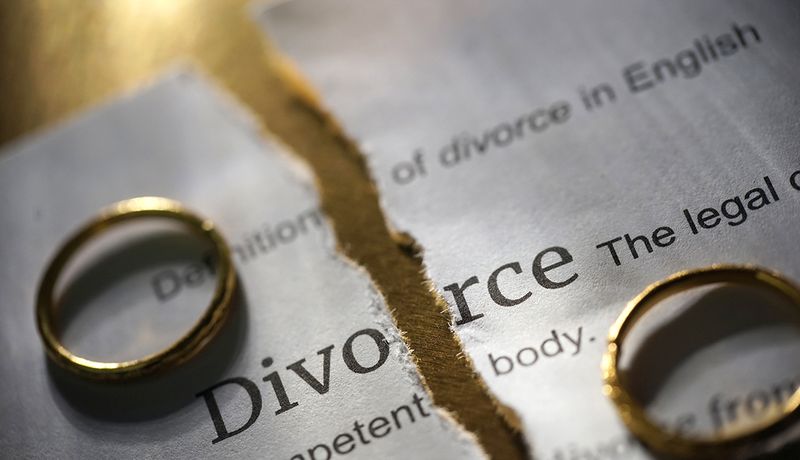
In the 1950s, divorce carried a heavy stigma, branding women who left their marriages as failures. The societal expectation was clear: women were to maintain their marriages at all costs, regardless of personal happiness or fulfillment.
This view trapped many in unhappy or even abusive relationships, as leaving was often equated with personal and moral failure. Divorcees faced judgment and ostracization from their communities, reinforcing the importance of marital status over personal well-being.
Today, divorce is recognized as a complex decision, often necessary for personal growth and happiness. This shift reflects a growing understanding of relationships as dynamic and personal rather than rigid social contracts.
10. College was optional—marriage was the real goal
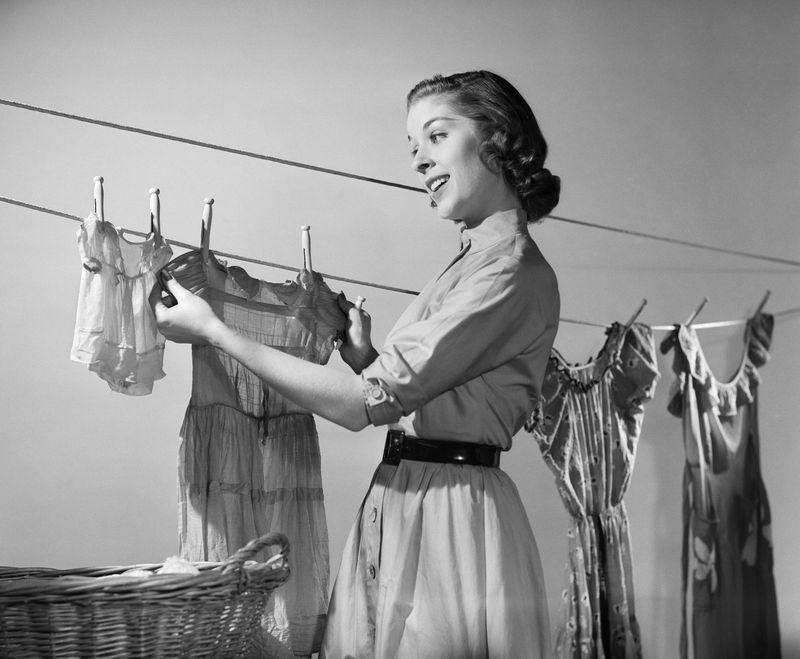
In the 1950s, higher education for women was often viewed as secondary to finding a husband. The prevailing belief was that college was less about academic pursuit and more about securing a future spouse.
This perspective discouraged women from pursuing their own academic and professional ambitions, reducing college to a mere stepping stone to marriage. It undervalued women’s potential and intelligence, boxing them into predefined social roles.
Today, education is a fundamental right and opportunity for women, celebrated as a pathway to empowerment and independence. The change in attitudes towards women’s education highlights a broader acceptance of their capabilities and aspirations.
11. Being assertive meant being labeled “difficult”

The 1950s considered assertiveness in women as a flaw rather than a strength. Women who spoke up or took charge were often labeled as “difficult” or too aggressive. The expectation was to be demure, agreeable, and accommodating.
This stereotype discouraged women from expressing their opinions or pursuing leadership roles, confining them to subservient positions both professionally and socially. It stunted personal growth and self-expression, leaving many women feeling voiceless.
Today, assertiveness is celebrated as a valuable trait, essential for success and leadership. The shift in perception underscores the progress made towards gender equality and the acknowledgment of women’s voices.
12. Going to a bar alone? Social suicide
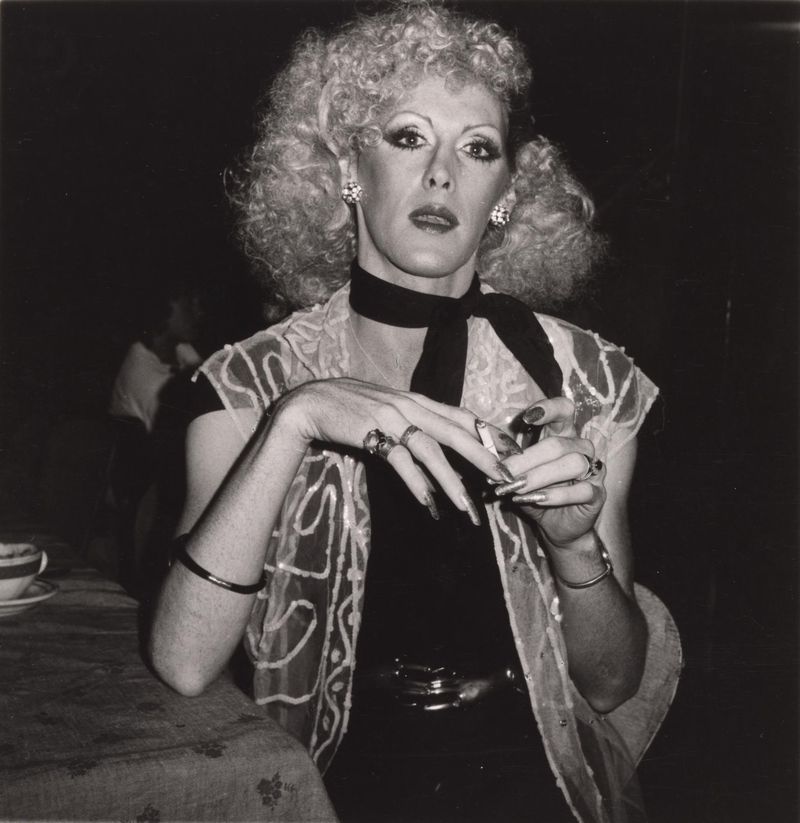
For a woman in the 1950s, visiting a bar alone was nearly unthinkable. Such a bold move labeled her as “loose” or desperate, as social norms dictated that a lady only frequented such places in the company of others.
This restriction was about control, policing women’s behavior and ensuring they adhered to prescribed social roles. The mere act of enjoying a drink alone was seen as an affront to propriety. Today, women enjoy the simple freedom of going where they please, alone or not, without fear of judgment. This liberation is a testament to the journey towards personal autonomy and the dismantling of archaic norms.
13. Short hair was considered “too masculine”
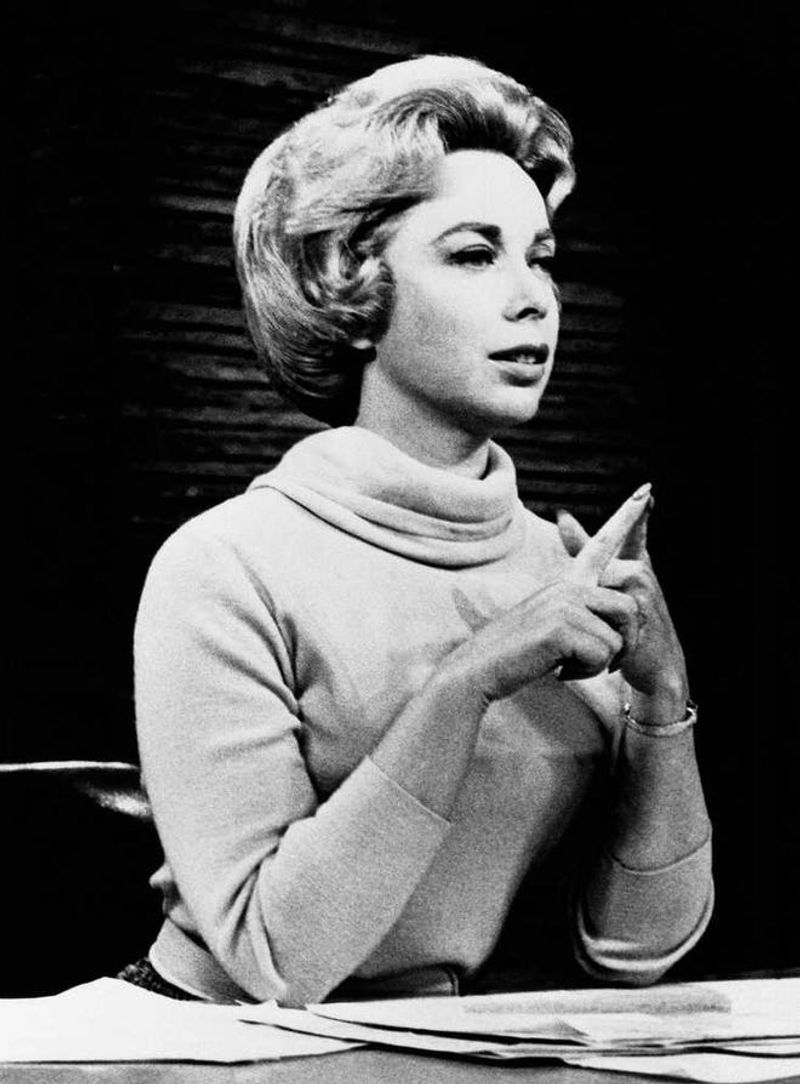
In the 1950s, women with short hair faced criticism for defying traditional beauty standards. Long hair was synonymous with femininity, and anything short was labeled “too masculine.” This notion was rooted in rigid gender stereotypes that dictated how women should look.
Opting for short hair was seen as a rebellious act, challenging the status quo and questioning societal norms. Women who dared to cut their hair short were often viewed as radical, pushing against the tide of conventional beauty. Today, hair is an expression of individuality, with countless styles celebrated for their diversity and creativity. The evolution of hairstyles reflects a broader acceptance of personal choice and expression.
14. Career ambition was mocked, not encouraged

In the 1950s, women with career ambitions faced societal ridicule rather than support. The concept of a woman aspiring to anything beyond domestic responsibilities was often dismissed as unrealistic or even comical.
Such attitudes confined women to limited roles, discouraging them from pursuing their passions and professional growth. Ambition was seen as incompatible with femininity, a stereotype that stifled potential and innovation.
Today, women pursue careers across all fields, breaking barriers and redefining success. This paradigm shift is a celebration of women’s talents and contributions, once stifled by outdated perceptions.
15. Staying home was praised, but never paid
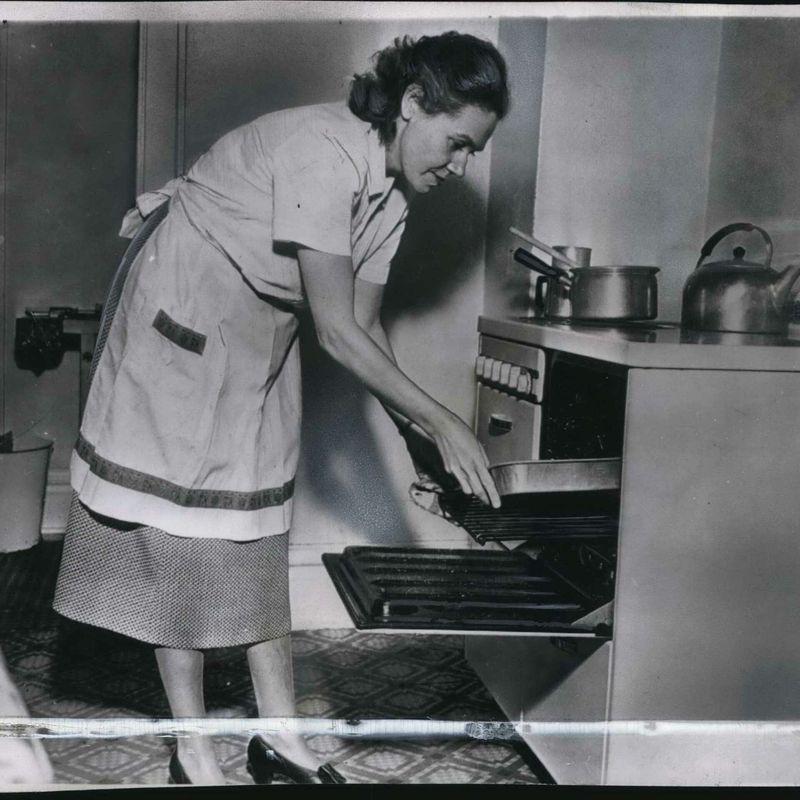
The 1950s glorified the role of the stay-at-home wife, often showering praise on women for their domestic dedication. However, this admiration never translated into material recognition or financial support.
Unpaid labor defined the lives of many women, who tirelessly managed households without compensation. This expectation reinforced gender roles, valuing domesticity over professional pursuits.
Today, the conversation about unpaid work has evolved, with increased awareness and advocacy for fair treatment and recognition of all forms of work. The ongoing dialogue seeks to balance the scales, acknowledging the significant contributions of homemakers in shaping families and communities.
16. Asking for equal pay was called disrespectful
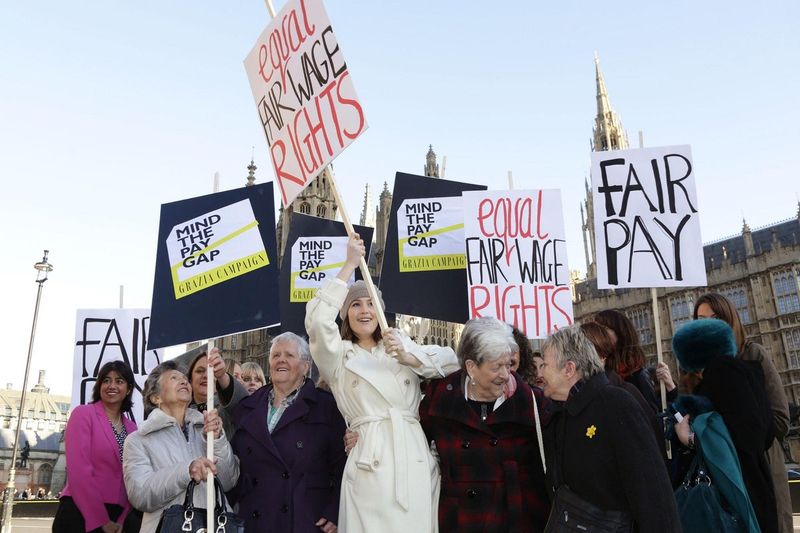
Demanding equal pay for equal work in the 1950s was viewed as audacious and disrespectful. Women faced backlash for questioning the wage gap, as the workplace was dominated by men who saw pay equity as a threat.
This unjust expectation kept women in lower-paying positions, reinforcing economic dependency and limiting career advancement. The struggle for equal pay became a pivotal issue in the broader fight for gender equality.
Today, equal pay is a fundamental principle in workplaces, recognized as a human right. The ongoing efforts to close the wage gap continue to challenge outdated norms, empowering women to stand up for their worth.
17. Expressing anger was “unfeminine”

In the 1950s, showing anger was considered unfeminine for women. They were expected to be serene and composed, even in situations that warranted frustration or displeasure. This stereotype silenced many women, forcing them to suppress their emotions.
The idea that anger was unbecoming led to the internalization of feelings and diminished self-expression. Women were denied the basic human experience of expressing a full range of emotions.
Today, acknowledging and expressing emotions is seen as healthy and normal, contributing to mental well-being. The acceptance of anger as a valid emotion underscores a broader understanding of gender and emotional expression.
18. Their job was to “support”—never to lead
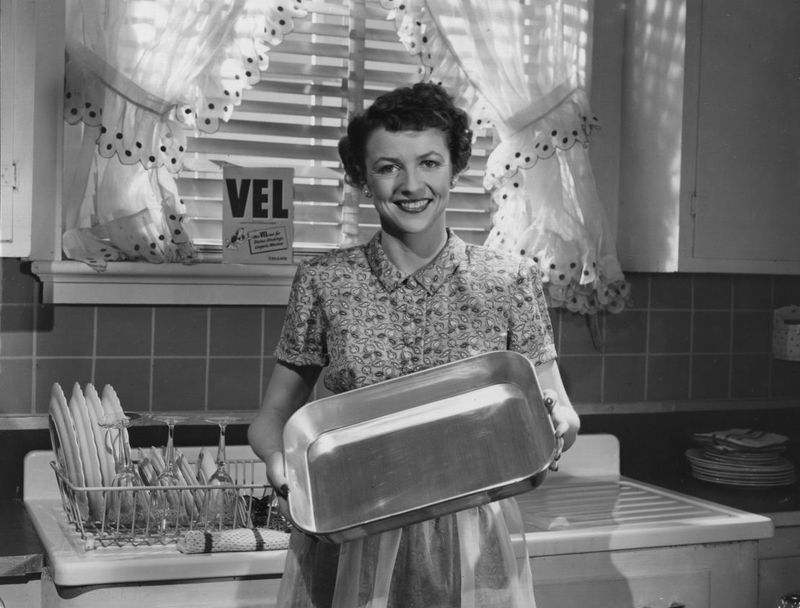
The 1950s relegated women to supportive roles, emphasizing their duty to assist rather than lead. Whether in the workplace or at home, women were expected to be the silent backbone, enabling others without seeking the spotlight.
This expectation marginalized women’s leadership potential, keeping them behind the scenes and out of decision-making positions. The notion of women as leaders was largely dismissed, limiting opportunities for growth and influence.
Today, women lead across all sectors, spearheading change and innovation. The transformation in gender roles reflects a society that values diversity and recognizes the importance of women’s leadership in shaping the future.

